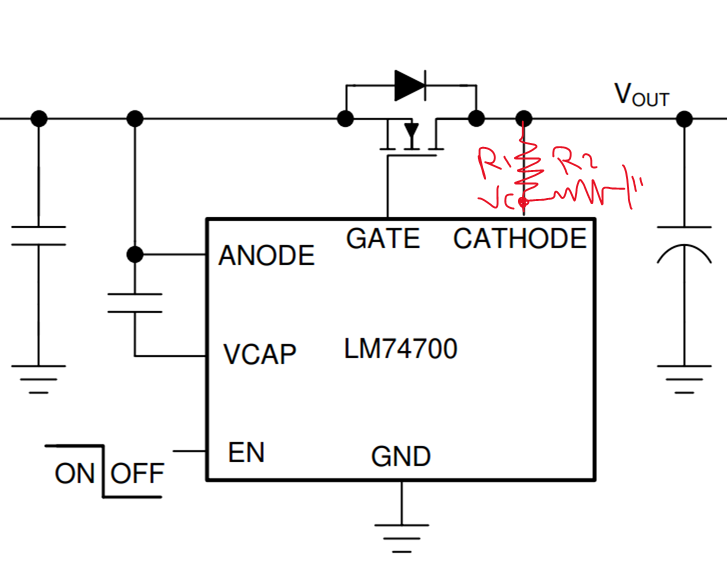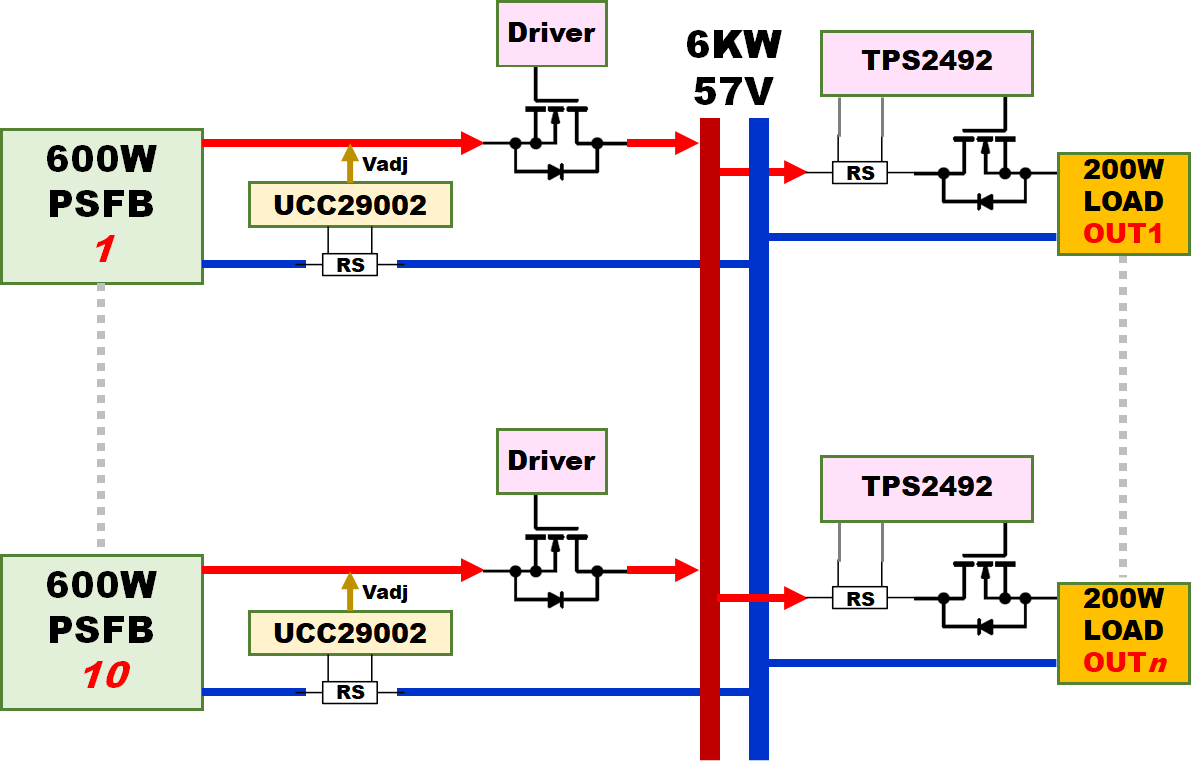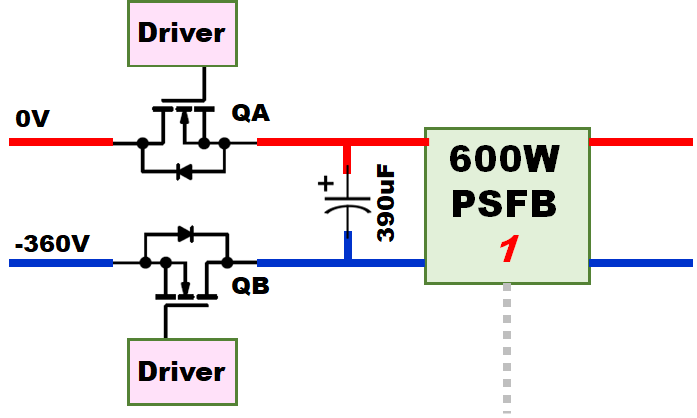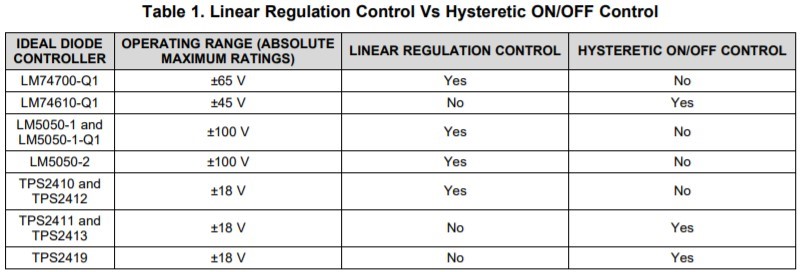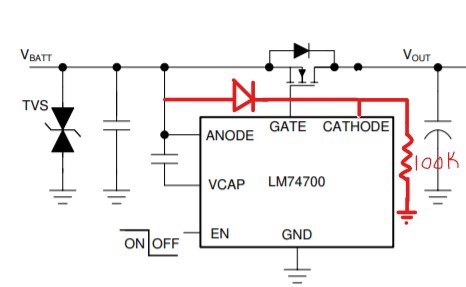Other Parts Discussed in Thread: UCC29002, INA280, LM5069, TPS2492, , LM5060, TPS1663
Hello,
I am looking for High-side NMOS Static Switch Driver. The NMOS FET is used as Ideal Diode for paralleling up to ten 600W PSFB converter modules. A load sharing controller (UCC29002) is sitting on the left side of the FET and implements low side-sensing with V+ only. The output of all converters is aggregated together, forming up to 6KW/57VDC. The power is then distributed into up to 30 OUTPUT connectors to connect various loads.
1) We are considering TPS2492 as an e-fuse with external switch for power distribution to the loads. LM5069 was another option but we need information about the load current and the IMON signal featured by TPS2492 is a plus in this case. Otherwise, we have to use INA280 with LM5069 for current sensing.
2) We evaluated LM74700-Q1 to be used as a High-side NMOS Static Switch Driver. The issue we encountered is that LM74700-Q1 has a -11mV reverse trip voltage, which is way less than the system regulation accuracy. Additionally, LM74700-Q1 has 0.5usec reverse sensing response, which is much faster than the converter response. Basically, ONLY LM74700-Q1 connected to the converter with the highest output voltage will be active and all the rest will be in the reverse protection mode. One workaround I though about is to trick the IC using a voltage divider between cathode of IC and FET drain to the ground as illustrated in the attached image. However, we are concerned about forcing the IC to allow reverse current, which is not something the IC is intended to do.
The anode voltage is around 54V. The cathode voltage when paralleling multiple converter with the load sharing controllers active will exceed the the Anode voltage (Vout + Vadj). Vadj = ~2% Vout. Hence, Vc should be < Vout - (0.02xVout). Therefore, R1 > 0.02xR2. R2 is selected to be 200K. R1 was calculated R1 > 4K. Assuming Vout = 54V, Vc is 1.1V below Vout. Maximum reverse current is Im = [(Vout - Vc + Vak_rev) / RdsON] = (54-52.9+0.011)/0.0021 = 529A, which means the IC is no longer limiting any reverse current.
We also considered LM5060 as a High-side NMOS Static Switch Driver, but this IC can't drive a forward switch without having another B2B FET.
Here is an abstract view of a proposed system architecture.
Questions:
1) PLEASE ADVISE IF TPS2492 WOULD BE AN OPTIMAL CHOISE FOR THIS APPLICATION AND CAN BE USED AS ILLUSTRATED IN ABOVE BLOCK DIAGRAM.
2) PLEASE ADVICE IF THERE IS A REPLACMENT FOR LM74700 THAT ALLOWS REVERSE CURRENT WHEN THE NMOS SWITCH IS ON. IF NOT, DO YOU SEE ANY ISSUES WITH DC BAIASING THE IC CATHOD TO A VOLTAGE LOWER THAN THE ANODE VOLTAGE? ANY CONCERNS ABOUT RELIABILITY? ANY CONCERNS ABOUT THE ARCHITECTURE?
THANK YOU!


